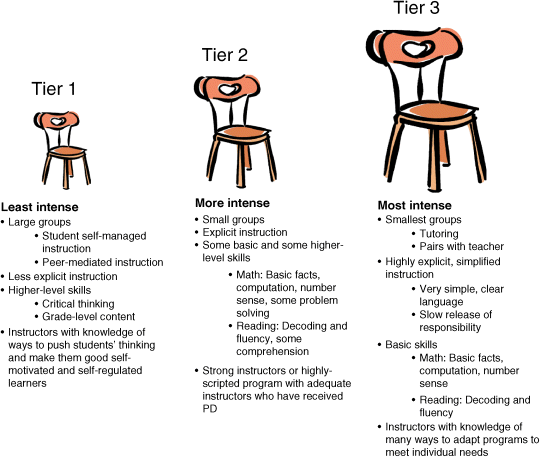TwoEssentials of a Tiered Intervention System to Support Unique Learners: Recommendations from Research and Practice
Devin M. Kearns
Christopher J. Lemons
Douglas Fuchs
Lynn S. Fuchs
Responsiveness-to-intervention (RTI) is a common way to think about preventing academic difficulties in children at-risk for specific learning disabilities (SLD). The idea of RTI is to prevent academic difficulties by providing evidence-based instruction at a level of intensity necessary for each student. Different students require different amounts of teacher support to be successful. Under RTI, schools provide all students with the specific level of support they require (Vaughn, Linan-Thompson, & Hickman, 2003). This means that students receive different levels—or tiers—of support based on their level of need. Figure 2.1 illustrates the idea that we want to find a level of intensity that is—just like Goldilocks looking for a chair—“just right” for the student we are teaching. We want the level of intensity to reflect the level of student need.

Figure 2.1 Differences in Intensity Among Three Tiers of Instruction
In Goldilocks, she was looking for a chair that was “just right.” For students, we are looking for an intensity of instruction that is also just right.
In this chapter, we provide details to help school teams design, implement, and determine the effectiveness of a multitier RTI system ...
Get Essentials of Planning, Selecting, and Tailoring Interventions for Unique Learners now with the O’Reilly learning platform.
O’Reilly members experience books, live events, courses curated by job role, and more from O’Reilly and nearly 200 top publishers.

